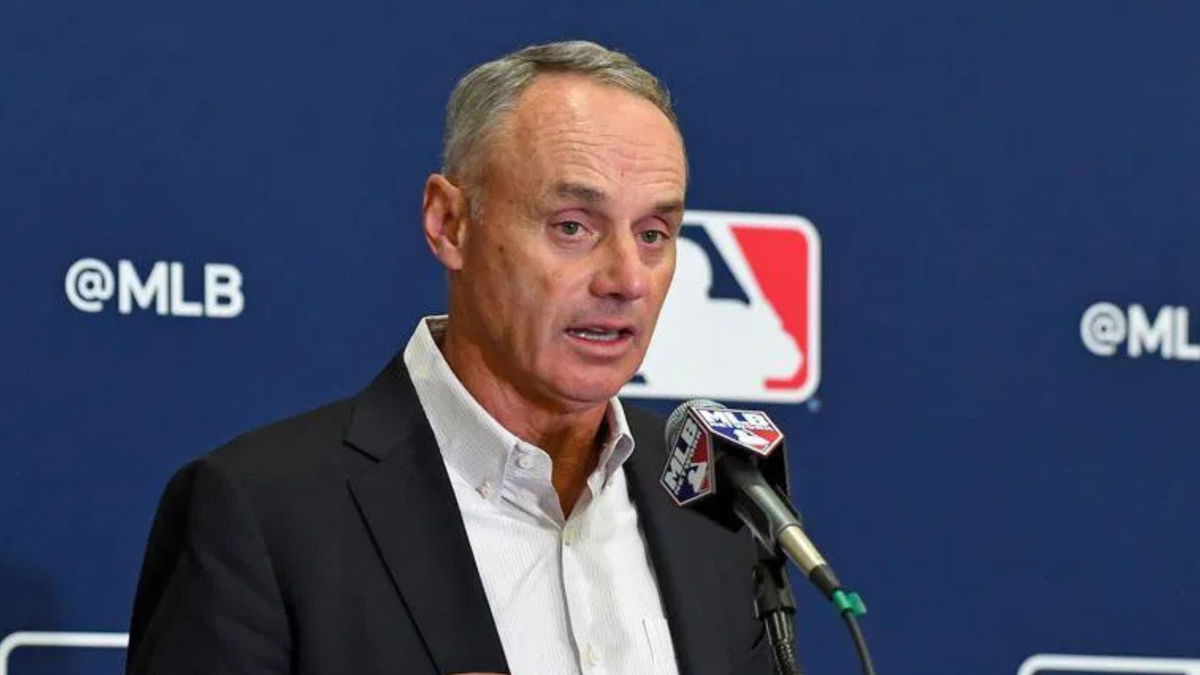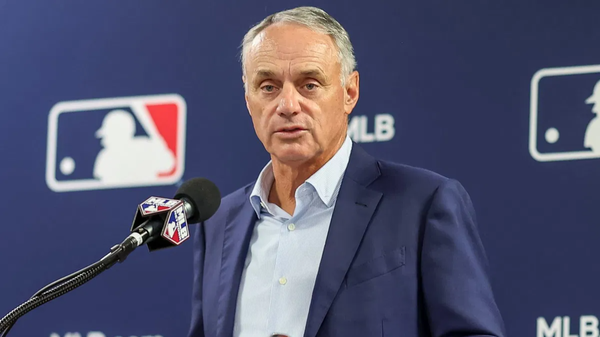
Imago
Image: IMAGO

Imago
Image: IMAGO
Baseball has always flirted with mystery—corked bats, sign-stealing scandals, and now, something far subtler. In 2025, MLB finds itself chasing answers as fast as outfielders chase warning-track fly balls. While hitters swear their bats haven’t gone cold, something certainly has. The league insists all is normal. But if that’s true, why does the ball feel like it’s hiding a secret under its seams? We have seen some of the best catches by the outfielders at this point in the season. For example, Denzel Clarke and his catch against the Angels was one of the best ever. Not to take anything away from him, but any other season, that ball was going another 10 yards back. This is not just us saying it; Athletics outfielder, Brent Rooker, has the same thoughts.
Watch What’s Trending Now!
During an interview, Rooker talked about the same issue and how it has affected his game. “I’ve definitely hit some balls that I thought were gonna have a chance, and they’ve been caught against the wall. Maybe the extra drag is why my expected slugging percentage is 100 points higher than my actual slugging percentage,” he said.
There’s something strange in the air—and it’s dragging fly balls down with it. MLB’s 2025 baseballs are behaving oddly, with a measurable increase in drag and a four-foot dip in distance. The average drag coefficient sits at .3514, the highest since Statcast began. Home runs per fly ball have slumped to an eight-year low, despite hitters swinging harder.
ADVERTISEMENT

ADVERTISEMENT
MLB, true to form, insists everything’s within spec—even as players point to disappearing home runs. The league claims no changes to ball construction or handling, blaming “normal variability” and hand-stitched quirks. Commissioner Rob Manfred has acknowledged the issue privately, but no clear public solution has surfaced. Meanwhile, the league’s offense stats—like 8.6 runs per game—cling to shallow optimism.
Batters across the league feel the sting of balls dying at the wall. A’s slugger Rooker also called out how his expected slugging is 100 points higher than his actual. But he wasn’t the only one. Daulton Varsho made highlight catches on rockets that should’ve cleared fences. If this isn’t fixed, the game’s power balance could quietly, dangerously shift—and fans may not even realize why.
ADVERTISEMENT
If baseball is a game of inches, then 2025 has shaved off just enough to matter. The league may call it normal variability, but hitters and physics say otherwise. When 400-foot bombs turn into warning-track prayers, something’s clearly off—and it’s not just launch angles. If MLB keeps shrugging, we may be entering a dead-ball era… and this time, no one even agreed to it.
MLB has another big change on its mind
Baseball can survive scandals, slumps, and even the Oakland A’s attendance—but what it can’t outrun is its own obsession with tinkering. In a league where even the baseballs seem to come with fine print and added drag, the next big change could alter the strike zone—and the soul of the sport. With Commissioner Rob Manfred eyeing a 2026 debut, the Automated Ball-Strike System (ABS) may soon enter regular-season games. No longer a tech fantasy confined to Triple-A and spring training, the ABS challenge system is inching closer to prime time. The strike zone might soon be defined not by a chest protector, but by a circuit board.
ADVERTISEMENT
The push comes from a brewing crisis behind the plate—calls missed, tempers flared, and zero accountability. In 2023 alone, umpires made over 21,000 incorrect ball-strike calls, according to Umpire Auditor. That’s nearly one blown call every four pitches, with accuracy dropping from 94.1% in 2015 to 91.6% in 2023. Games have turned not on talent, but on a twitchy wrist or wandering eye behind the mask.
Some calls have changed more than innings—they’ve flipped entire seasons. Think Angel Hernandez’s missed strike three on Kyle Schwarber in 2022, or that brutal phantom strike on Aaron Judge, low and away. Each error chips away at trust, leaving players to adapt to inconsistent zones and fans to rage online. With MLB slow to punish poor umpiring, ABS might be less a revolution, and more a rescue mission.
Top Stories
Blue Jays Confirmed to Land MLB’s “Big Fish” After Mark Shapiro Fires Bold Message to Clubhouse, per Insider

Rift in Phillies Clubhouse as Dave Dombrowski Punishes Bryce Harper Teammate in “Worst Trade” Fallout, Says Insider

MLB Signings: 5 Teams That Must Sign Kyle Tucker, Bo Bichette & Alex Bregman

Mark Shapiro Rubs Salt in Yankees’ Wounds as He Issues Stark Ultimatum to Blue Jays Clubhouse

MLB News: Mets Suffer $17.75M Loss to Make Francisco Lindor Happy & End Clubhouse Animosity for Good

If baseball’s soul lives in its imperfections, then the strike zone is its most vulnerable nerve. But when human error becomes a habit, backed by stats, not just rants, technology stops being a gimmick and starts looking like justice. MLB can’t keep preaching tradition while letting games be decided by guesswork. Robo-umps aren’t a betrayal of the game—they might just be its most accurate umpire yet. Batter up, algorithms.
ADVERTISEMENT
ADVERTISEMENT
ADVERTISEMENT
ADVERTISEMENT

